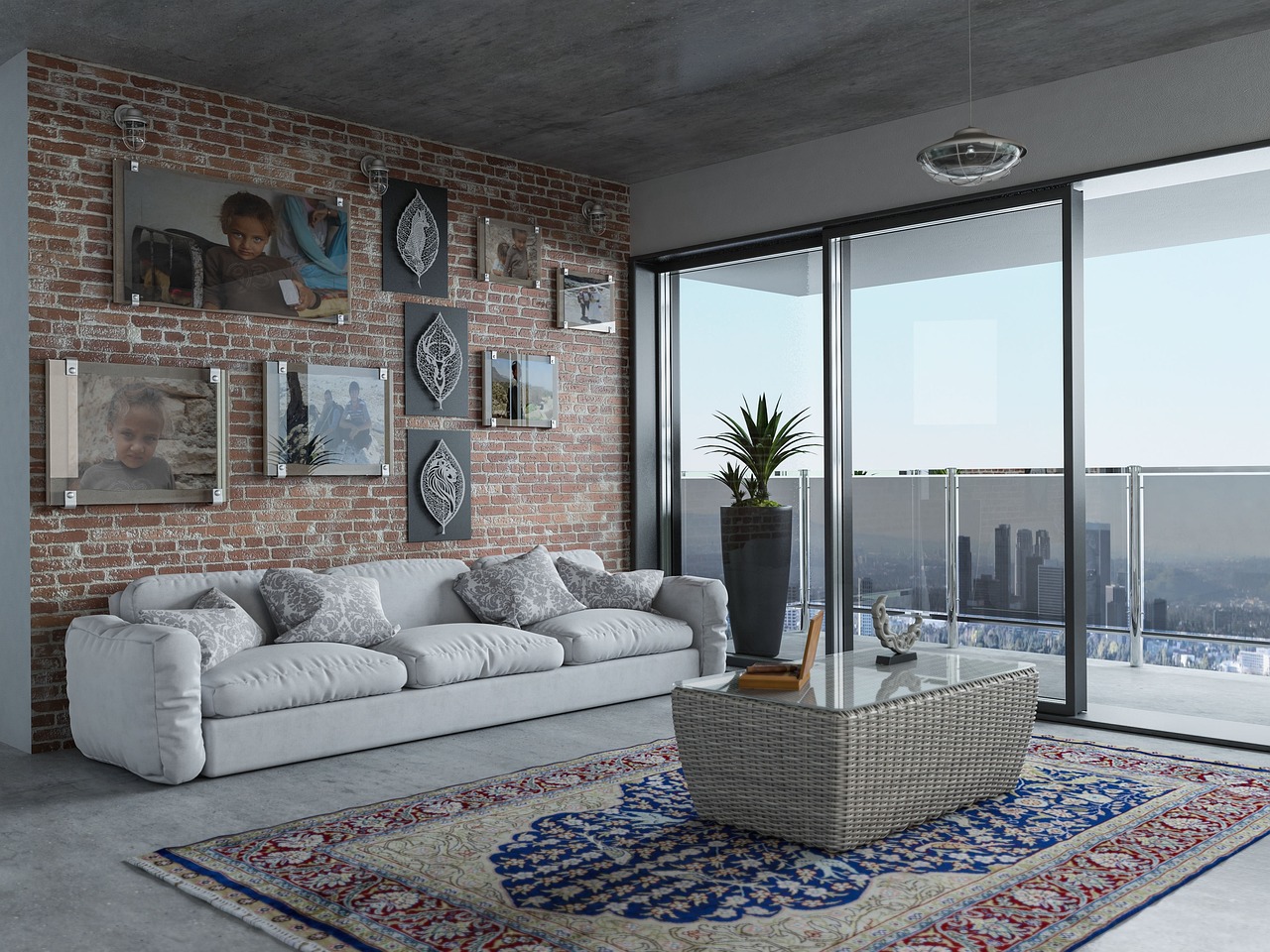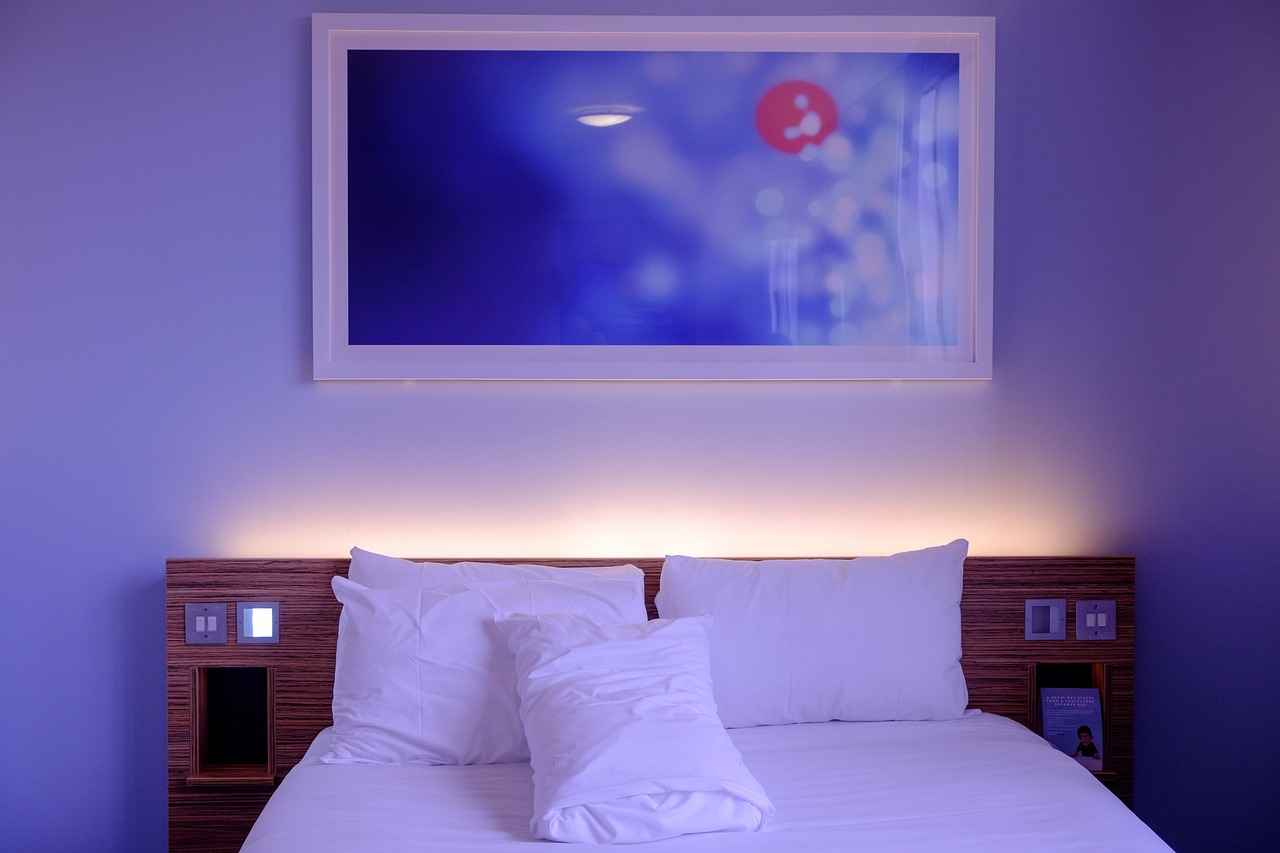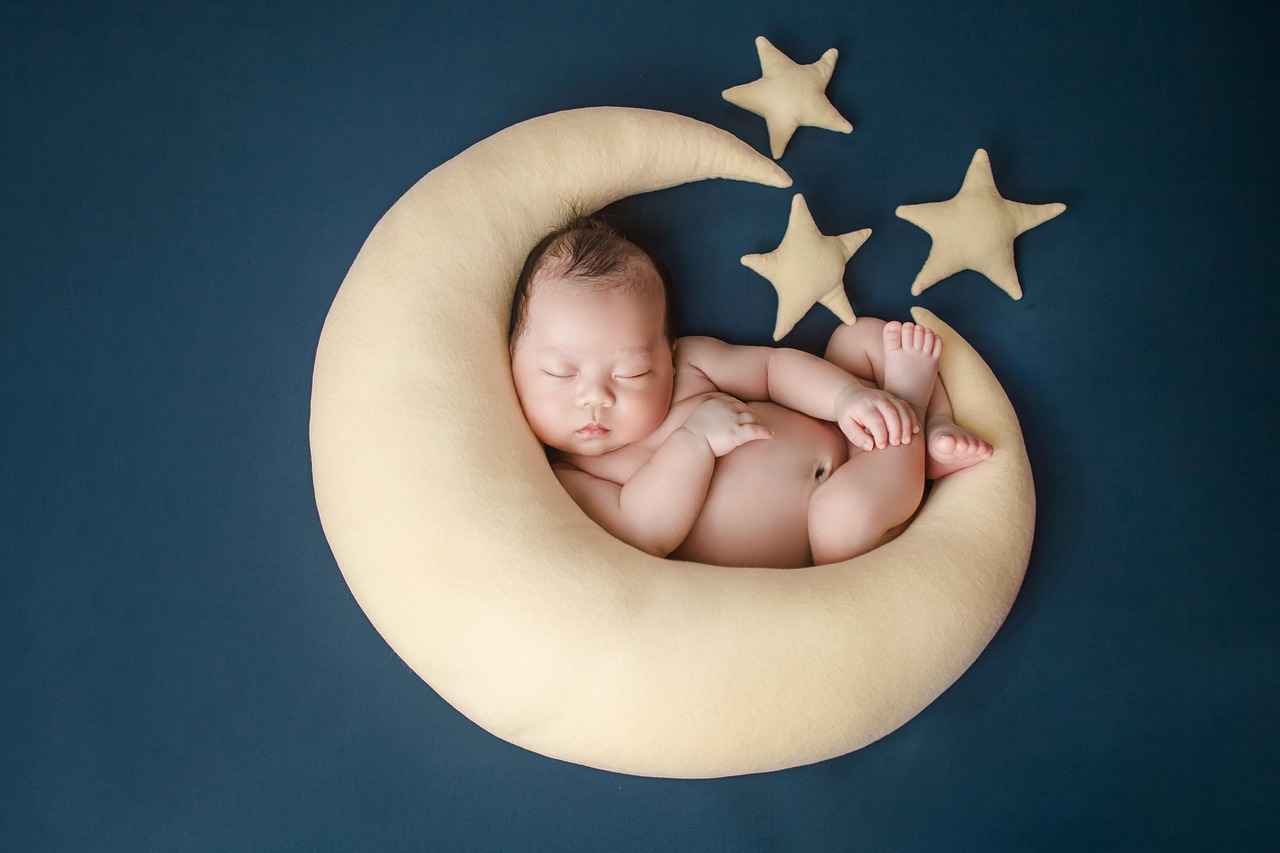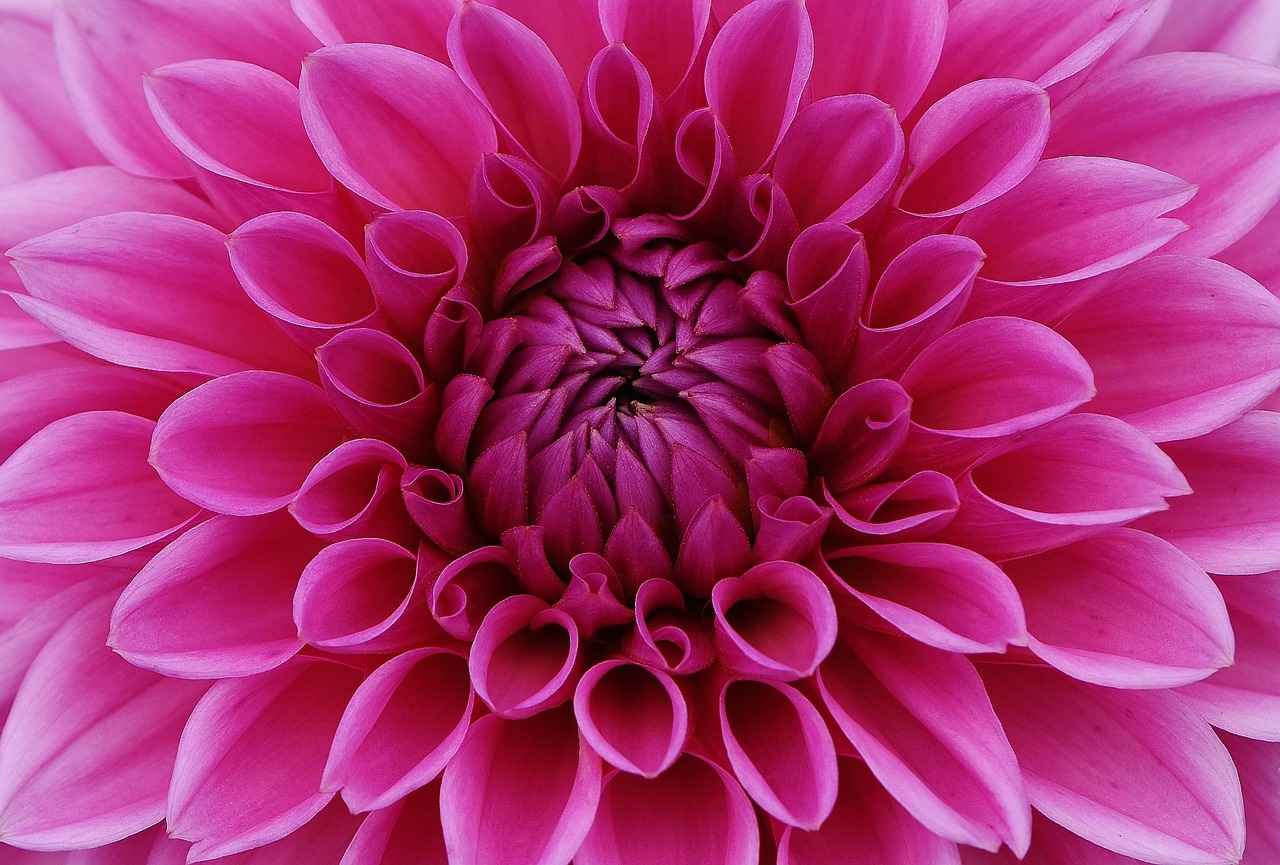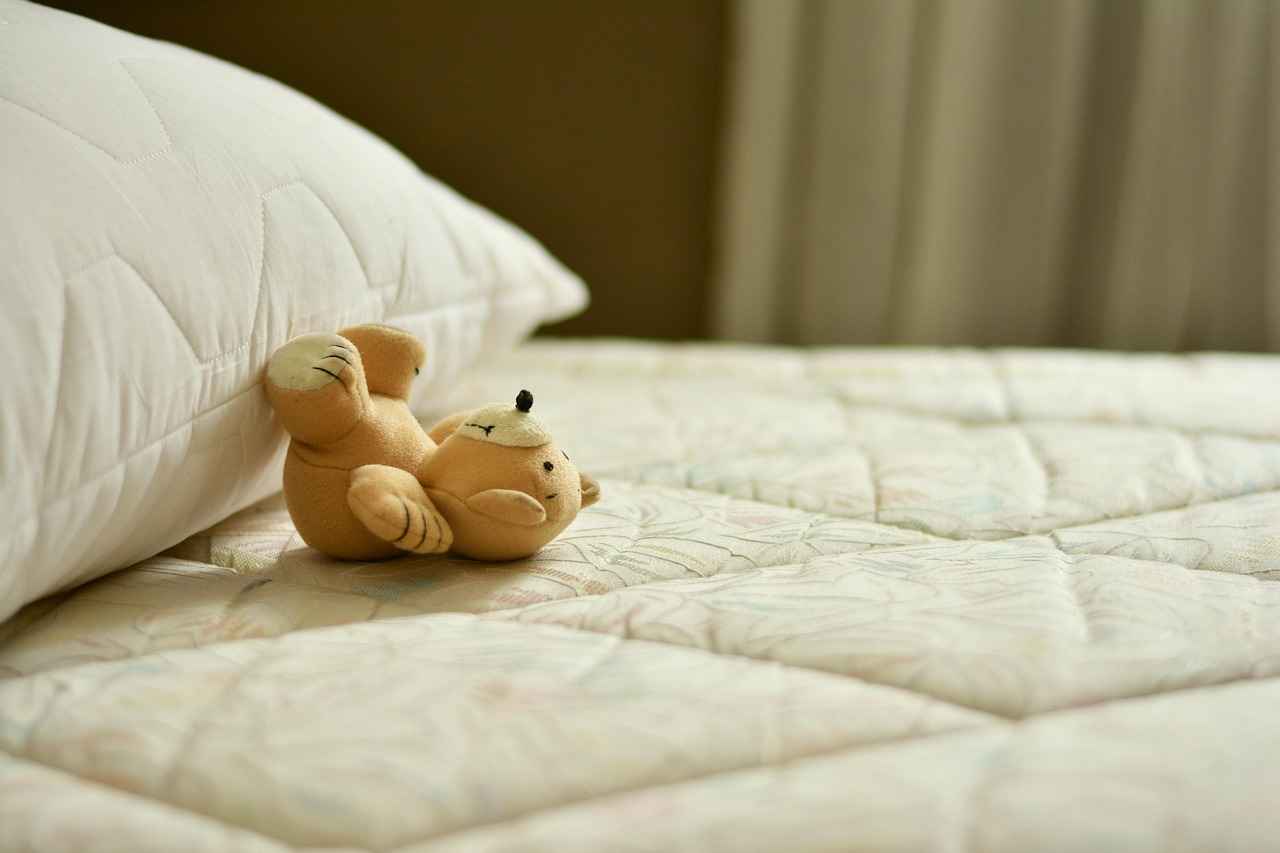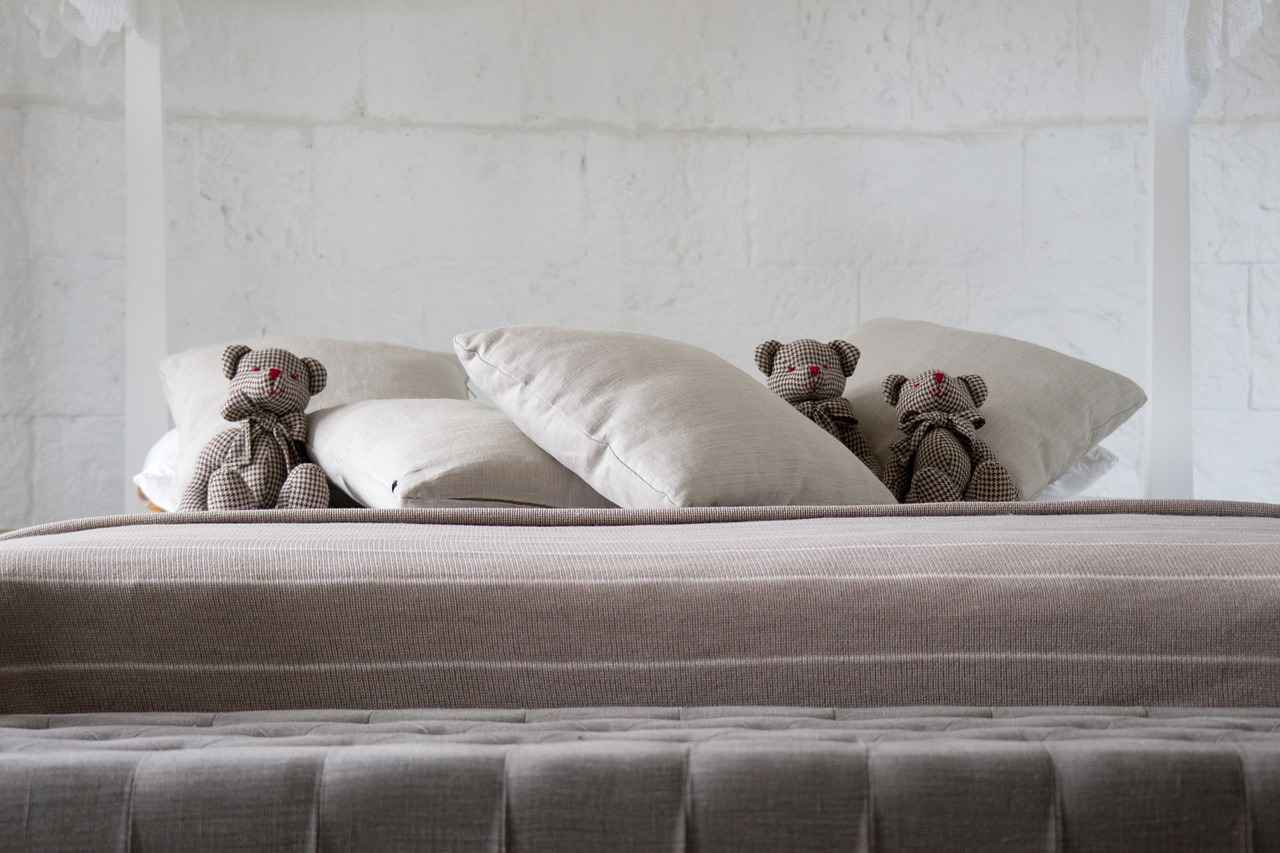Explore the latest trends in bed gaddi designs that prioritize comfort and aesthetics, transforming your sleeping space into a haven of relaxation. With an increasing focus on personal wellness, the selection of bed gaddi styles has evolved significantly, incorporating innovative materials and designs that cater to diverse preferences.
Understanding Bed Gaddi: What Is It?
A bed gaddi is a traditional Indian mattress that combines comfort with cultural significance. Typically made from natural materials, it provides a unique sleeping experience that differs from Western mattresses. The history of bed gaddi dates back centuries, evolving in design and materials to enhance the sleeping experience.
Key Features of Comfortable Bed Gaddi Designs
- Thickness: The ideal thickness of a bed gaddi can vary, but it generally ranges from 4 to 8 inches to provide adequate support.
- Materials: The choice of materials, such as cotton, foam, or natural fibers, plays a crucial role in comfort.
- Ergonomic Support: Designs that cater to various sleeping positions can significantly improve sleep quality.
Materials Used in Bed Gaddi
The choice of materials significantly impacts comfort. Common materials include:
- Cotton: Breathable and soft, ideal for hot climates.
- Foam: Provides excellent support and pressure relief.
- Natural Fibers: Eco-friendly options that enhance breathability and comfort.
Natural vs. Synthetic Materials
Understanding the benefits and drawbacks of natural versus synthetic materials can help you make an informed choice. Natural materials, such as cotton and wool, are often more breathable and environmentally friendly, while synthetic materials like polyester offer durability and lower maintenance.
Memory Foam and Its Benefits
Memory foam is a popular choice for its contouring properties. It conforms to the body, providing support and alleviating pressure points, which enhances overall sleep quality. This material is especially beneficial for individuals with joint pain or those who change sleeping positions frequently.
Design Trends in Bed Gaddi
Current design trends reflect a blend of tradition and modernity. Popular styles include:
- Minimalist Designs: Clean lines and neutral colors create a serene environment.
- Bold Patterns: Vibrant prints and textures add personality to the bedroom.
- Eco-Friendly Options: Sustainable materials are becoming increasingly popular.
Choosing the Right Bed Gaddi for Your Home
Selecting the ideal bed gaddi involves considering various factors:
- Size: Measure your bed frame to ensure a perfect fit.
- Firmness: Assess your sleeping style to determine the right firmness level.
- Aesthetic Appeal: Choose colors and patterns that complement your bedroom decor.
Maintaining Your Bed Gaddi for Longevity
Proper maintenance can extend the life of your bed gaddi significantly. Regular cleaning and care practices include:
- Vacuuming: Regularly vacuum to remove dust and allergens.
- Spot Cleaning: Address stains immediately to prevent permanent damage.
- Flipping: Rotate your gaddi periodically to ensure even wear.
When to Replace Your Bed Gaddi
Knowing when to replace your bed gaddi is crucial for maintaining sleep quality. Signs that indicate it’s time for a new gaddi include:
- Visible sagging or lumps.
- Persistent discomfort or pain during sleep.
- Age of the gaddi exceeding 7-10 years.
Embracing Comfort with Bed Gaddi Designs
Incorporating the latest trends and insights into your bed gaddi selection can greatly enhance your sleeping experience. By prioritizing comfort and style, you ensure that your bedroom becomes a sanctuary for relaxation.

Understanding Bed Gaddi: What Is It?
A bed gaddi is not merely a mattress; it represents a fusion of comfort and cultural heritage in India. Traditionally handcrafted, bed gaddis have been integral to Indian households, offering a unique sleeping experience that differs significantly from Western mattresses. This section explores the rich history, diverse materials, and distinctive characteristics that set bed gaddis apart.
Historically, the bed gaddi has roots that trace back to ancient India, where it was used not just for sleeping but also for social gatherings and family interactions. The design and construction of these mattresses have evolved, yet they remain true to their traditional essence. Unlike Western mattresses that often prioritize standardized sizes and materials, bed gaddis are typically made to cater to individual preferences, showcasing a variety of sizes and designs.
The materials used in crafting a bed gaddi play a crucial role in its comfort and durability. Traditionally, bed gaddis are made from natural fibers such as cotton, wool, and jute. These materials are not only breathable but also provide excellent support and cushioning. In contrast, many Western mattresses utilize synthetic materials like memory foam or gel, which, while comfortable, may not offer the same level of breathability.
- Cotton: Known for its softness and breathability, cotton gaddis are ideal for hot climates, keeping the sleeper cool.
- Jute: Often used as a base material, jute adds firmness and durability to the gaddi.
- Wool: Provides natural insulation, making it suitable for colder weather.
When comparing bed gaddis to Western mattresses, one significant difference lies in their construction. Bed gaddis are often thicker and are layered with various materials to enhance comfort. This layering technique allows for better ergonomic support, accommodating different sleeping positions. In contrast, Western mattresses may focus on specific technologies like pocket springs or memory foam layers, which can limit customization.
Another aspect that makes bed gaddis unique is their cultural significance. They are often adorned with traditional Indian fabrics and patterns, reflecting regional artistry and craftsmanship. This not only adds aesthetic appeal but also transforms the bed into a focal point in the bedroom. The vibrant colors and intricate designs of bed gaddis can evoke a sense of warmth and cultural identity, making them more than just a sleeping surface.
In summary, understanding the bed gaddi involves appreciating its historical roots, the materials used, and its cultural significance. Unlike conventional Western mattresses, bed gaddis offer a personalized sleeping experience that emphasizes comfort, support, and tradition. As you consider your options for a comfortable night’s sleep, exploring the world of bed gaddis may provide you with a unique alternative that aligns with both your comfort needs and aesthetic preferences.

Key Features of Comfortable Bed Gaddi Designs
When it comes to achieving a restful night’s sleep, the design and features of a bed gaddi play a crucial role. This section focuses on the key features that contribute to a comfortable bed gaddi, ensuring that it meets the diverse needs of different sleepers. Understanding these elements can help you make an informed choice when selecting the perfect bed gaddi for your home.
- Thickness: The thickness of a bed gaddi directly influences its comfort level. A thicker gaddi often provides more cushioning, which can be beneficial for those who prefer a softer feel. Generally, a thickness of 4 to 6 inches is ideal for most sleepers, but personal preference plays a significant role. Some may opt for a thicker gaddi for added support, especially if they sleep on their side.
- Materials: The materials used in a bed gaddi significantly affect its comfort and durability. Common materials include:
- Cotton: Known for its breathability and softness, cotton provides a natural feel and is often used in traditional gaddis.
- Foam: Foam gaddis, especially those made from memory foam, contour to the body, offering excellent support and pressure relief. This can be particularly beneficial for those with back pain.
- Natural Fibers: Materials like jute or coir are eco-friendly options that provide firmness and durability.
- Ergonomic Support: A well-designed bed gaddi should offer ergonomic support that caters to various sleeping positions. This means providing adequate support for the spine while allowing for natural alignment. A gaddi that conforms to the body’s contours can help alleviate pressure points, leading to a more restful sleep.
- Breathability: The ability of a bed gaddi to allow air circulation is essential for maintaining a comfortable sleeping temperature. Materials that promote breathability can help prevent overheating during the night, which is particularly important in warmer climates.
- Firmness Levels: Different sleepers have varying firmness preferences. Some may prefer a softer gaddi that allows for deeper sinking, while others might opt for a firmer surface for better support. Understanding the different firmness levels available can help you choose a gaddi that suits your sleeping style.
In summary, the key features of a comfortable bed gaddi include thickness, materials, ergonomic support, breathability, and firmness levels. By considering these aspects, you can select a bed gaddi that not only enhances your sleep quality but also complements your personal preferences and sleeping habits. Investing in a quality bed gaddi is essential for creating a restful and inviting sleeping environment.
Materials Used in Bed Gaddi
When it comes to achieving the ultimate comfort in a bed gaddi, the choice of materials plays a pivotal role. Different materials contribute uniquely to the overall feel, durability, and support of the gaddi. This section explores some of the most common materials used in bed gaddi manufacturing, including cotton, foam, and natural fibers, as well as their respective advantages and disadvantages.
- Cotton: Renowned for its breathability and softness, cotton is a staple in bed gaddi construction. It allows for excellent air circulation, helping to regulate temperature and keep you comfortable throughout the night. Additionally, cotton is hypoallergenic, making it an ideal choice for those with allergies. However, pure cotton gaddis may compress over time, affecting their firmness.
- Foam: Foam gaddis, particularly memory foam, have gained popularity due to their ability to contour to the body. This material provides exceptional support by distributing weight evenly and relieving pressure points. Moreover, foam gaddis are often resistant to dust mites and mold, enhancing their durability. On the downside, they can retain heat, which may not be suitable for hot sleepers.
- Natural Fibers: Materials such as jute, coir, and wool are increasingly being used in bed gaddi designs. These natural fibers are sustainable and eco-friendly, appealing to environmentally conscious consumers. They offer good breathability and moisture-wicking properties, which can enhance comfort. However, natural fibers may require more maintenance compared to synthetic options, as they can be prone to wear and tear.
When selecting a bed gaddi, it’s essential to consider not only the comfort level but also the durability of the materials. For instance, while cotton is soft and comfortable, it may not last as long as foam or natural fibers. Foam gaddis, though more durable, can vary in quality, so it’s crucial to choose high-density foam for longevity. Natural fibers, while sustainable, may require careful handling to prevent damage.
Understanding the distinctions between natural and synthetic materials can significantly influence your decision. Natural materials tend to be more breathable and environmentally friendly, but they may lack the same level of support as synthetic options. Conversely, synthetic materials like polyurethane foam can provide excellent support and durability but may not be as breathable. Evaluating personal preferences and sleeping habits is key to making the right choice.
In summary, the materials used in bed gaddi construction greatly affect comfort, support, and durability. By understanding the properties of cotton, foam, and natural fibers, you can make an informed decision that aligns with your sleeping needs and lifestyle. Consider factors such as breathability, support, and maintenance when selecting your ideal bed gaddi to ensure a restful night’s sleep.
Natural vs. Synthetic Materials
When it comes to choosing materials for your bed gaddi, understanding the benefits and drawbacks of natural versus synthetic options is essential. Your choice can significantly affect your comfort, health, and the environment. This section explores the environmental impact, comfort level, and longevity of both material types, providing you with a comprehensive overview to make an informed decision.
Environmental Impact
- Natural Materials: Typically sourced from renewable resources, natural materials like cotton, wool, and latex have a lower environmental impact. They are biodegradable and often produced with fewer chemicals, making them a more sustainable choice.
- Synthetic Materials: These materials, such as polyester and polyurethane, are derived from petrochemicals. Their production process can be energy-intensive and may release harmful pollutants. However, some synthetic options are designed to be more eco-friendly, incorporating recycled materials.
Comfort Comparison
Comfort is subjective and can vary based on individual preferences:
- Natural Materials: Generally known for their breathability and moisture-wicking properties, natural materials can help regulate body temperature, providing a comfortable sleeping environment. They also tend to be softer and more adaptable to body contours.
- Synthetic Materials: While some synthetic options, like memory foam, offer excellent support and pressure relief, others may retain heat and cause discomfort. However, advancements in technology have led to the development of cooling gel-infused foams that enhance comfort.
Longevity and Durability
| Material Type | Longevity | Durability |
|---|---|---|
| Natural Materials | 5-10 years | Moderate; can wear down with heavy use |
| Synthetic Materials | 7-15 years | High; resistant to wear and tear |
Natural materials often have a shorter lifespan due to their organic nature, while synthetic materials can last longer, making them a more durable option for those who prioritize longevity. However, the trade-off may include exposure to chemicals and allergens, which could impact health.
Conclusion
Ultimately, the choice between natural and synthetic materials for your bed gaddi comes down to personal preferences and priorities. If you value sustainability and breathability, natural materials may be the way to go. Conversely, if you seek durability and specific comfort features, synthetic materials might better suit your needs. By weighing these factors, you can make a well-informed decision that enhances your sleeping experience.
Memory Foam and Its Benefits
Memory foam has gained immense popularity in the world of sleep products, and for good reason. Its unique contouring properties provide unparalleled support and comfort, making it a top choice for mattresses and bed gaddis alike. This section will explore how memory foam works, its benefits, and why it might be the perfect addition to your sleep setup.
At the core of memory foam’s appeal is its ability to conform to the body. When pressure is applied, the foam softens and molds to the shape of the sleeper, distributing weight evenly across the surface. This feature is particularly beneficial for those who experience discomfort from traditional mattresses, as it helps to alleviate pressure points that can lead to tossing and turning throughout the night.
One of the standout benefits of memory foam is its supportive nature. Unlike traditional spring mattresses, which can create uncomfortable pressure on the hips and shoulders, memory foam provides a cradling effect that supports the natural curvature of the spine. This alignment is crucial for reducing back pain and promoting a healthier sleep posture.
| Benefits of Memory Foam | Description |
|---|---|
| Pressure Relief | Reduces discomfort by distributing body weight evenly. |
| Spinal Alignment | Supports natural spine curvature, reducing back pain. |
| Motion Isolation | Minimizes disturbance from movements of a partner. |
| Durability | Long-lasting material that maintains its shape over time. |
Moreover, memory foam is known for its motion isolation properties. This means that if one partner moves or gets out of bed, the other is less likely to feel the disturbance. This feature is particularly advantageous for couples, as it allows for uninterrupted sleep, even with varying sleep schedules.
Another aspect worth mentioning is the durability of memory foam. High-quality memory foam mattresses can last for many years without losing their supportive qualities. This longevity makes them a worthwhile investment for anyone seeking long-term comfort.
However, it is essential to consider the temperature sensitivity of memory foam. Traditional memory foam tends to retain heat, which may be uncomfortable for some sleepers. Fortunately, many modern memory foam products now incorporate cooling technologies, such as gel-infused foam or breathable covers, to mitigate heat retention and enhance overall comfort.
In summary, memory foam offers a range of benefits that make it an excellent choice for enhancing sleep quality. Its ability to contour to the body, provide support, and minimize motion transfer contributes to a better night’s sleep. Whether you are experiencing discomfort from your current mattress or simply seeking an upgrade, memory foam could be the solution you need for a more restful and rejuvenating sleep experience.
Design Trends in Bed Gaddi
As the world of interior design evolves, so too does the art of crafting the perfect bed gaddi. Current design trends reflect a harmonious blend of tradition and modernity, showcasing styles that cater to both aesthetic and comfort needs. This section explores the popular styles, colors, and patterns that are making waves in the realm of bed gaddi.
Popular Styles
- Traditional Indian Patterns: Intricate designs inspired by cultural heritage remain a favorite. These patterns often include floral motifs and geometric shapes that resonate with the rich history of Indian craftsmanship.
- Minimalist Aesthetics: On the other end of the spectrum, minimalist designs are gaining traction. Clean lines and simple patterns create a serene environment, perfect for modern homes.
- Bohemian Flair: The bohemian style, characterized by vibrant colors and eclectic patterns, is also trending. This style allows for personal expression and adds a playful touch to bedroom decor.
Color Trends
Color plays a pivotal role in setting the mood of a bedroom. Currently, earthy tones such as terracotta, olive green, and muted blues are in vogue. These colors not only promote relaxation but also blend well with various decor styles. Additionally, bold colors like deep burgundy and navy blue are making a statement, adding a touch of luxury and depth.
Patterns and Textures
The use of patterns and textures is another key trend in bed gaddi design. Textured fabrics, such as velvet and linen, provide visual interest and comfort. Patterns like stripes and checks are also popular, offering a modern twist to traditional designs. Mixing and matching different textures can create a layered look that adds depth to the sleeping space.
Innovative Materials
Today’s bed gaddi designs are not just about aesthetics; they also prioritize comfort through innovative materials. For instance, the incorporation of eco-friendly materials is becoming increasingly popular. Organic cotton and bamboo fibers are not only sustainable but also provide excellent breathability and softness. Additionally, advancements in memory foam technology have led to the creation of gaddis that contour to the body, offering personalized support for a restful night’s sleep.
Combining Tradition with Modernity
One of the most exciting aspects of current bed gaddi trends is the ability to combine traditional elements with modern designs. For example, a traditional Indian motif can be paired with a contemporary color palette, creating a unique and inviting atmosphere. This fusion allows homeowners to honor their cultural heritage while embracing modern design sensibilities.
Conclusion
In summary, the latest design trends in bed gaddi reflect a beautiful interplay of tradition and innovation. By incorporating popular styles, colors, and materials, you can transform your sleeping space into a sanctuary of comfort and style. Whether you prefer the intricate patterns of traditional designs or the sleek lines of modern aesthetics, there is a bed gaddi trend that caters to your personal taste and enhances your overall bedroom experience.

Choosing the Right Bed Gaddi for Your Home
Choosing the right bed gaddi for your home is essential for ensuring a good night’s sleep and enhancing your bedroom’s aesthetic appeal. With numerous options available, it can be overwhelming to make the right choice. This section will guide you through the critical factors to consider, including size, firmness, and style, helping you to find the perfect gaddi that suits your needs and preferences.
Size is a fundamental aspect when selecting a bed gaddi. It’s important to measure your bed frame accurately to ensure a proper fit. Here are some key size considerations:
- Standard Sizes: Familiarize yourself with standard bed sizes such as twin, full, queen, and king. Knowing these dimensions will help you narrow down your options.
- Height and Thickness: Consider the thickness of the gaddi. A thicker gaddi may provide more comfort, but it should also fit well within the overall height of your bed frame.
- Room Space: Ensure that the gaddi size complements the available space in your bedroom without making it feel cramped.
Firmness is another critical factor that influences your sleep quality. Different sleeping styles require different firmness levels:
- Soft Gaddi: Ideal for side sleepers as it allows the shoulders and hips to sink in, relieving pressure points.
- Medium Firm Gaddi: A versatile option that suits back and combination sleepers, providing a balance of support and comfort.
- Firm Gaddi: Best for stomach sleepers as it helps maintain proper spinal alignment and prevents sinking.
While comfort is paramount, the aesthetic appeal of your bed gaddi cannot be overlooked. Here are some tips to choose a gaddi that fits your style:
- Color and Pattern: Select colors and patterns that complement your bedroom decor. Neutral tones can create a calming atmosphere, while bold patterns can add a touch of personality.
- Material Texture: The texture of the gaddi can significantly affect the overall look. Consider materials that not only feel good but also look appealing.
- Matching Accessories: Coordinate your gaddi with pillows, bedspreads, and other accessories to create a cohesive look.
Your budget will also play a crucial role in your selection process. Bed gaddis come in a wide range of prices, so it’s important to find one that offers the best value for your money. Consider the following:
- Quality vs. Price: Invest in a high-quality gaddi that provides durability and comfort, even if it means spending a bit more.
- Sales and Discounts: Keep an eye out for seasonal sales or discounts that can help you save on your purchase.
To further assist you in making an informed decision, here are a few expert tips:
- Test Before You Buy: If possible, try lying on the gaddi in-store to gauge its comfort and support.
- Read Reviews: Customer reviews can provide insights into the gaddi’s performance and durability.
- Warranty and Return Policy: Check the warranty and return policy in case the gaddi does not meet your expectations.
By considering these factors, you can confidently choose the right bed gaddi that meets your comfort needs while enhancing your bedroom’s style. Making an informed decision will not only improve your sleep quality but also contribute to a more inviting and relaxing sleeping environment.
Size Considerations for Bed Gaddi
When it comes to achieving the perfect sleep environment, size plays a pivotal role in ensuring both comfort and functionality. Selecting the right size bed gaddi is essential for maximizing your sleeping experience, and understanding how to measure your bed frame accurately is the first step in this process.
To begin, it’s important to recognize that bed gaddis come in various sizes, typically corresponding to standard bed frame dimensions. Common sizes include single, double, queen, and king. Each size serves different needs, and choosing the right one depends on a few key factors.
- Room Size: Before selecting a bed gaddi, assess the size of your room. A large gaddi in a small room can make the space feel cramped, while a small gaddi in a spacious room may look out of place.
- Bed Frame Dimensions: Measure your bed frame accurately. Use a measuring tape to determine the length and width of the frame. It’s crucial to measure both the inside dimensions (where the gaddi will sit) and the outside dimensions (to ensure it fits well within the room).
- Personal Preferences: Consider how much space you prefer while sleeping. If you share your bed, you may want a larger size to ensure both individuals have ample room to move comfortably.
Once you have the measurements, it’s time to choose a gaddi that fits those dimensions. A well-fitted gaddi not only enhances comfort but also contributes to the overall aesthetics of your bedroom. A gaddi that is too small may lead to discomfort as it can shift during sleep, while a gaddi that is too large may hang over the edges, creating an unappealing look.
Additionally, consider the thickness of the gaddi. A thicker gaddi can provide more cushioning and support, which is particularly beneficial for those who prefer a softer sleeping surface. However, it’s essential to ensure that the thickness complements the height of your bed frame. Ideally, the top of the gaddi should align with the height of your mattress or be slightly higher for ease of getting in and out of bed.
In terms of functionality, the right size gaddi can also impact how well you maintain your bedding. A properly sized gaddi makes it easier to find fitted sheets and other accessories, ensuring a neat and tidy appearance.
In conclusion, selecting the right size bed gaddi is fundamental to creating a comfortable and functional sleeping environment. By accurately measuring your bed frame, considering your personal preferences, and understanding the impact of size on both comfort and aesthetics, you can make an informed decision that enhances your sleep quality. Remember, investing time in choosing the right size can lead to a more restful and rejuvenating sleep experience.
Firmness Levels: Which Is Right for You?
When it comes to achieving a restful night’s sleep, understanding firmness levels is crucial. The firmness of a bed gaddi can significantly affect your comfort and overall sleep quality. This section will explore the various firmness options available, helping you make an informed decision based on your sleeping style and preferences.
Firmness levels generally range from soft to firm, and the right choice often depends on your sleeping position. Here’s a breakdown of the common firmness categories:
- Soft (1-3): Ideal for side sleepers, soft gaddis provide cushioning that allows the shoulders and hips to sink in, promoting spinal alignment.
- Medium (4-6): A versatile option suitable for back and combination sleepers. Medium firmness offers a balance of support and comfort, accommodating various sleeping positions.
- Firm (7-10): Best for stomach sleepers and those who prefer minimal sinkage. Firm gaddis provide robust support, preventing the body from sinking too deeply and maintaining proper spinal alignment.
When selecting the right firmness level, consider the following factors:
- Your Sleeping Position: Side sleepers may benefit from softer gaddis, while back and stomach sleepers often prefer firmer options.
- Body Weight: Heavier individuals may require a firmer gaddi to prevent sinking, while lighter individuals might find softer options more comfortable.
- Personal Preference: Ultimately, comfort is subjective. It’s essential to choose a firmness level that feels right for you.
To help you visualize the differences in firmness, consider the following table:
| Firmness Level | Recommended For | Key Benefits |
|---|---|---|
| Soft | Side Sleepers | Pressure relief, spinal alignment |
| Medium | Back and Combination Sleepers | Balanced support, versatile comfort |
| Firm | Stomach Sleepers | Enhanced support, prevents sinking |
Additionally, testing out different firmness levels can provide valuable insights. If possible, visit a store to lie down on various gaddis to find the one that feels best. Many manufacturers also offer trial periods, allowing you to test the gaddi at home for a certain period before making a final decision.
In conclusion, understanding firmness levels is essential for selecting the right bed gaddi. By considering your sleeping position, body weight, and personal preferences, you can choose a gaddi that not only enhances your comfort but also promotes better sleep quality. Remember, a good night’s sleep is vital for overall well-being, so take the time to find the perfect firmness level for your needs.
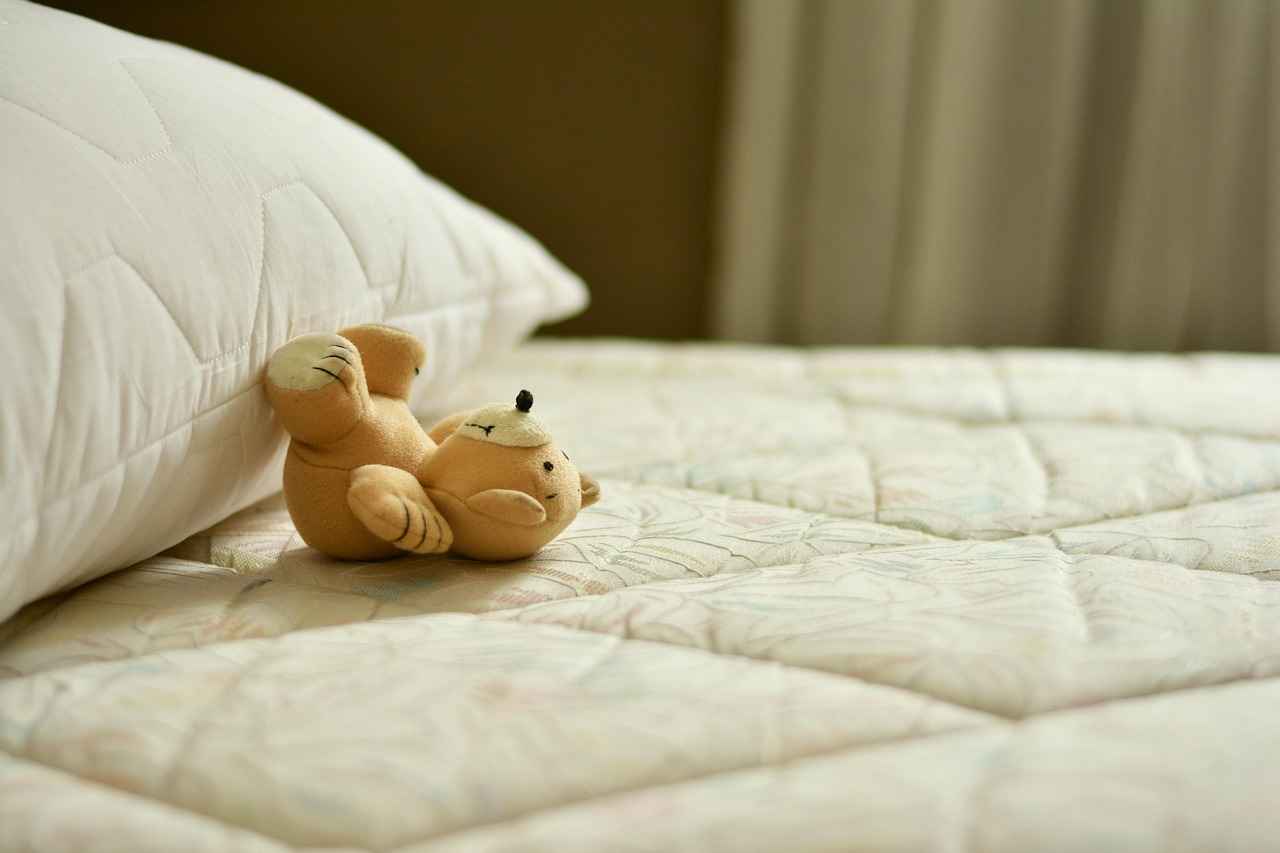
Maintaining Your Bed Gaddi for Longevity
Maintaining your bed gaddi is essential for ensuring its longevity and comfort. A well-maintained gaddi not only enhances your sleeping experience but also protects your investment. This section provides effective cleaning and care practices to keep your gaddi in top condition.
Regular Cleaning is the cornerstone of maintenance. Dust mites, allergens, and bacteria can accumulate over time, affecting both hygiene and health. Here are some cleaning tips to consider:
- Vacuuming: Use a vacuum cleaner with an upholstery attachment to regularly vacuum your gaddi. This helps remove dust and debris that can accumulate.
- Spot Cleaning: For stains, use a mild detergent mixed with water. Apply it to a cloth and gently blot the area. Avoid soaking the gaddi, as excess moisture can lead to mold.
- Air Out: Periodically, take your gaddi outside on a sunny day. Fresh air and sunlight can help eliminate odors and kill bacteria.
Protective Covers are another effective way to maintain your gaddi. Investing in a high-quality mattress protector can shield it from spills, stains, and dust mites. This not only keeps your gaddi clean but also extends its lifespan significantly.
Flipping and Rotating your gaddi is also crucial. Depending on the type of gaddi you have, flipping it every few months can help distribute wear evenly. This practice prevents sagging and maintains its shape over time.
Humidity Control plays a vital role in maintaining your gaddi. Excess humidity can lead to mold and mildew, while too little can dry out the materials. Aim to keep your bedroom environment balanced, using a dehumidifier or humidifier as needed.
When to Replace Your Bed Gaddi is a common concern. Knowing the signs that indicate it’s time for a new gaddi can help you avoid discomfort. Look for:
- Visible Damage: Tears, lumps, or sagging spots are clear indicators that your gaddi is past its prime.
- Persistent Odors: If your gaddi has developed an unpleasant smell despite cleaning, it may be time for a replacement.
- Discomfort: If you wake up with aches and pains, it could signal that your gaddi is no longer providing adequate support.
In conclusion, maintaining your bed gaddi through regular cleaning, protective measures, and timely replacements can significantly enhance its longevity. By following these practices, you can ensure that your sleeping environment remains comfortable and hygienic, contributing to better sleep quality.
Cleaning Tips for Bed Gaddi
Keeping your bed gaddi clean is essential for maintaining hygiene and ensuring a comfortable sleeping environment. Regular cleaning not only enhances the longevity of your gaddi but also promotes better health. Here are some effective cleaning tips tailored for different materials commonly used in bed gaddi.
Regular cleaning is vital for hygiene and comfort. Dust mites, allergens, and bacteria can accumulate in your gaddi over time, leading to potential health issues. By implementing a consistent cleaning routine, you can create a healthier sleep space that supports your overall well-being.
- Cotton Gaddis: Cotton is breathable and comfortable but can trap dust and stains. Use a vacuum cleaner with an upholstery attachment to remove dust. For stains, mix mild detergent with water and gently blot the area with a clean cloth.
- Foam Gaddis: Foam gaddis are popular for their support but can absorb moisture and odors. Spot clean with a damp cloth and a mild detergent. Avoid soaking the foam, as it can damage its structure. To refresh, sprinkle baking soda on the surface, let it sit for a few hours, and then vacuum it off.
- Natural Fiber Gaddis: These gaddis, made from materials like jute or coir, require special care. Use a soft brush to remove dirt and dust. For deeper cleaning, consider professional cleaning services to avoid damaging the fibers.
In addition to regular spot cleaning, deep cleaning your bed gaddi every few months can help maintain its integrity and hygiene. Here’s how:
- Remove Bedding: Strip your gaddi of all bedding, including sheets and covers.
- Vacuum Thoroughly: Use a vacuum cleaner with a brush attachment to vacuum the entire surface of the gaddi, ensuring you reach the seams and crevices.
- Deodorize: Sprinkle baking soda evenly over the gaddi and let it sit for at least 15 minutes to absorb odors. Vacuum it up afterward.
- Spot Clean Stains: For any stains, use a cloth dampened with a mixture of water and mild detergent. Gently blot the area without soaking it.
- Air Out: If possible, take your gaddi outside on a sunny day to air out. Sunlight helps eliminate bacteria and freshens up the material.
Taking preventive measures can significantly reduce the need for frequent deep cleaning:
- Use a Mattress Protector: A high-quality mattress protector can shield your gaddi from spills, stains, and dust mites.
- Rotate Regularly: Rotate your gaddi every few months to ensure even wear and tear.
- Avoid Eating in Bed: This simple practice can prevent crumbs and spills that attract pests and create stains.
By following these cleaning tips, you can ensure that your bed gaddi remains a comfortable and hygienic place to rest. Regular maintenance not only extends the life of your gaddi but also contributes to a healthier sleeping environment.
When to Replace Your Bed Gaddi
Knowing when to replace your bed gaddi is crucial for maintaining sleep quality. A comfortable gaddi is essential for a good night’s sleep, and recognizing the signs of wear and tear can help you avoid restless nights and discomfort. In this section, we will discuss the key indicators that suggest it’s time for a new gaddi.
- Visible Wear and Tear: If you notice lumps, sagging, or uneven surfaces, it’s a clear sign that your gaddi has lost its structural integrity. Over time, the materials can break down, leading to an uncomfortable sleeping surface.
- Allergies or Respiratory Issues: An old gaddi can accumulate dust mites, mold, and allergens, which can trigger allergies or respiratory problems. If you find yourself sneezing or experiencing allergy symptoms more frequently, it may be time to consider a replacement.
- Increased Discomfort: If you wake up with aches, pains, or stiffness, your gaddi might not be providing the necessary support. This discomfort can negatively impact your overall sleep quality and daily functioning.
- Age of the Gaddi: Generally, a bed gaddi should be replaced every 7 to 10 years. If your gaddi is approaching or has surpassed this age, it’s wise to evaluate its condition and consider a new one.
- Changes in Sleeping Habits: If you have changed your sleeping position or have gained or lost weight, your current gaddi may no longer meet your needs. A gaddi that was comfortable before may not provide the same support for your new sleeping habits.
It’s essential to listen to your body and assess your gaddi regularly. Taking the time to evaluate these signs can lead to better sleep quality and overall health. A new bed gaddi can significantly enhance your comfort, allowing you to wake up refreshed and ready for the day.
When choosing a new gaddi, consider factors such as material, firmness, and size. Each of these aspects plays a vital role in your sleeping experience. For instance, memory foam gaddis are known for their ability to contour to the body, providing excellent support and pressure relief. Additionally, exploring different materials and styles can help you find a gaddi that aligns with your aesthetic preferences and comfort needs.
In summary, being aware of the signs that indicate it’s time to replace your bed gaddi is essential for maintaining optimal sleep quality. By recognizing these indicators and understanding your personal comfort requirements, you can make informed decisions that will enhance your overall sleeping experience.

Conclusion: Embracing Comfort with Bed Gaddi Designs
In the quest for a better night’s sleep, embracing the latest trends in bed gaddi designs can significantly transform your sleeping environment. By integrating both comfort and style, you can create a bedroom that not only looks good but also promotes restful sleep. The following sections will explore how to select the ideal bed gaddi that aligns with contemporary design trends while meeting your personal comfort needs.
Modern bed gaddi designs are evolving, incorporating innovative materials and styles that cater to diverse preferences. From contemporary aesthetics to traditional influences, the current trends emphasize both functionality and visual appeal. Popular choices include:
- Minimalist Designs: Simple, clean lines that create a serene atmosphere.
- Bold Patterns: Geometric shapes and vibrant colors that add a pop of personality.
- Layered Textures: Combining different materials for a cozy, inviting look.
When selecting a bed gaddi, understanding the key features that contribute to comfort is essential. Some important aspects to consider include:
- Thickness: A thicker gaddi often provides more support and comfort, especially for side sleepers.
- Material Composition: Natural materials like cotton and wool are breathable, while foam options offer contouring support.
- Ergonomic Support: Designs that cater to different sleeping positions can enhance comfort and reduce pain.
The materials used in your bed gaddi play a crucial role in your overall sleeping experience. Here are some popular options:
- Cotton: Breathable and soft, ideal for warm climates.
- Memory Foam: Known for its ability to conform to the body, providing excellent support.
- Natural Fibers: Sustainable options like jute and coir that offer durability and comfort.
Choosing the right size and firmness level is vital for ensuring a good night’s sleep. To determine the right size, measure your bed frame accurately. As for firmness, consider your sleeping position:
- Soft: Best for side sleepers who need cushioning for their shoulders and hips.
- Medium: A versatile option suitable for back and stomach sleepers.
- Firm: Ideal for those who prefer a solid surface for support.
To ensure the longevity of your bed gaddi, regular maintenance is essential. Here are some tips:
- Regular Cleaning: Vacuum and spot clean to remove dust and allergens.
- Rotation: Rotate your gaddi every few months to promote even wear.
- Replacement Signs: Look for sagging or lumps, which indicate it may be time for a new gaddi.
In conclusion, integrating the latest trends and insights into your bed gaddi selection can greatly enhance your sleeping experience. By prioritizing comfort, style, and proper maintenance, you can ensure that your bedroom remains a sanctuary for rest and relaxation. Choose wisely, and enjoy the benefits of a well-designed bed gaddi that meets your needs.
Frequently Asked Questions
- What is a bed gaddi?
A bed gaddi is a traditional Indian mattress known for its unique blend of comfort and cultural significance. Unlike typical Western mattresses, bed gaddis are often made with natural materials and designed to provide a cozy sleeping experience.
- What materials are commonly used in bed gaddi designs?
Bed gaddis can be crafted from a variety of materials, including cotton, foam, and natural fibers. Each material contributes differently to comfort, durability, and overall feel, making it essential to choose one that suits your sleeping preferences.
- How do I choose the right firmness level for my bed gaddi?
Choosing the right firmness level depends on your sleeping style. If you’re a back sleeper, a medium-firm gaddi might be ideal, while side sleepers often prefer a softer option for better pressure relief. Always consider your personal comfort when selecting firmness.
- How can I maintain my bed gaddi for longevity?
To keep your bed gaddi in top shape, regular cleaning is crucial. Vacuum it periodically and spot clean any stains. Additionally, rotating the gaddi can help distribute wear and tear evenly, extending its life significantly.
- When should I consider replacing my bed gaddi?
Signs that it’s time to replace your bed gaddi include visible wear and tear, lumps or sagging, and if you’re waking up with aches and pains. If your gaddi no longer provides the comfort it once did, it might be time for a new one.

